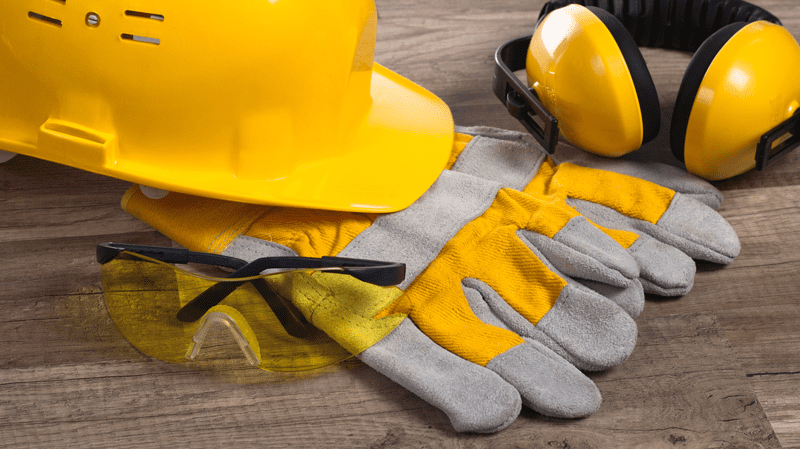Oil and gas workers and employers are well aware that jobs in this industry are notoriously dangerous.
In fact, the oil and gas industry is so dangerous that most workplace safety reporting focuses on severe injuries and fatalities. It’s understandable that so much focus is directed at preventing major accidents. But, unfortunately, that means that the prevention of less severe injuries can get overlooked.
These less dramatic injuries may be more common in oil and gas than we are aware: A 2017 E&E News story states, “The Labor Department has long known the number of injuries in the United States is higher than it reports every year. Former OSHA Chief David Michaels has put the undercount at between 30 and 60 percent. It could be higher in the oil and gas industry. Michaels has said ‘there’s a culture’ in the oil field of not reporting injuries.”
That is, lesser injuries are a big problem in oil and gas. By ignoring their prevention, employers are making a mistake.
Why Focusing on Preventing Lesser Injuries Matters
In a strong workplace safety culture, all injuries matter. Environments where fewer small injuries occur are more likely to be environments where fewer major injuries occur. In other words, minor injuries are strong indicators of widespread safety issues and a weak overall safety culture, which eventually leads to fatalities and severe injuries.
To demonstrate to your workforce that all injuries matter, require that workers follow all safety protocols, no matter how small. Workers who are focused on safety details will remember to obey safety protocols in all situations. When workers are focused on safety, they suffer fewer injuries.
Hand Injuries: A Great Place to Start
An excellent place to start your focus on “lesser” injuries is hand safety. Workers in the oil and gas industry need healthy hands to do their work and hand injuries are some of the most common in the industry: lacerations, smashes, and impact injuries happen too often.
How to Prevent Hand Injuries
Workers should always know where their hands are, and where they’re going. If they might encounter a hazard, they need to use appropriate hand protection. Major hand hazards in the oil and gas industry include heavy machinery, hand tools, and chemicals.
Preventing Hand Injuries Caused by Heavy Machinery
Oil and gas workers are around a lot of heavy machinery. Getting fingers or hands caught in these machines is too easy, and too common. Workers must always be attentive to where they put their hands and think ahead about the dangers they may encounter. Focused, calm attention and taking the time to methodically work through tasks around machinery keeps hands safer.
Preventing Hand Tool Injuries
Hand tools cause several issues for oil and gas workers, especially cutting tools, so we’ll focus there. Many of the key concerns about cutting tools also apply to other hand tools. Cutting tools add the additional risk of lacerations and punctures, which are common workplace injuries.
Find the safest cutting tools available by searching for manufacturers that champion safety innovation. When assessing a tool, look at the blade: this is the part of the tool, after all, that causes lacerations. Is it a safety blade? Does it mitigate the chance of getting cut? And how does the manufacturer reduce blade exposure?
Is the tool ergonomic? Ergonomics is important in the oil and gas world because workers often perform the same task repeatedly. This can lead to overuse injuries, which are common. Ergonomic tools reduce hand strain and the chances of repetitive strain injuries.
Is this tool easy to clean? Oil and gas workplaces are often dirty. Workers may need to clean tools frequently to keep them in good working order. It’s a bonus if the tool and blade are non-corrosive and don’t rust.
Of course, tools used in the oil and gas industry often need to be non-magnetic, non-sparking, and non-conductive. Oil and gas workers often use bronze-, copper-, or brass-bladed tools to meet these restrictions. Ceramic blades are an excellent option here.
Preventing Hand Injuries Caused by Chemicals
Workers who handle dangerous chemicals must wear the appropriate gloves. These will likely be different from the gloves they use to prevent lacerations, so it’s very important that they understand the difference and make sure they have the right gloves for the job. The gloves need to be in good working order and they need to fit well and allow the hand and fingers to move freely. Gloves that are restrictive or too large can be their own hazard.
Stay Focused on the Ultimate Goal
Accidents and fatalities are preventable. Safety protocols, like those for keeping hands safe, are typically simple and easy to follow. A workplace that focuses on preventing lesser injuries is a workplace that will experience fewer major injuries—on the path to none at all.
TJ Scimone is founder and CEO of Slice, Inc., which designs and manufactures unique, safer cutting tools, now used by leading companies in the oil and gas industry to reduce lacerations and overuse injuries. All tools feature ergonomic handles and patent-pending finger-friendly® ceramic blades, which are non-sparking, nonconductive, and non-magnetic. Safety is the driving factor behind all Slice innovation and the Slice Workplace Safety Blog






